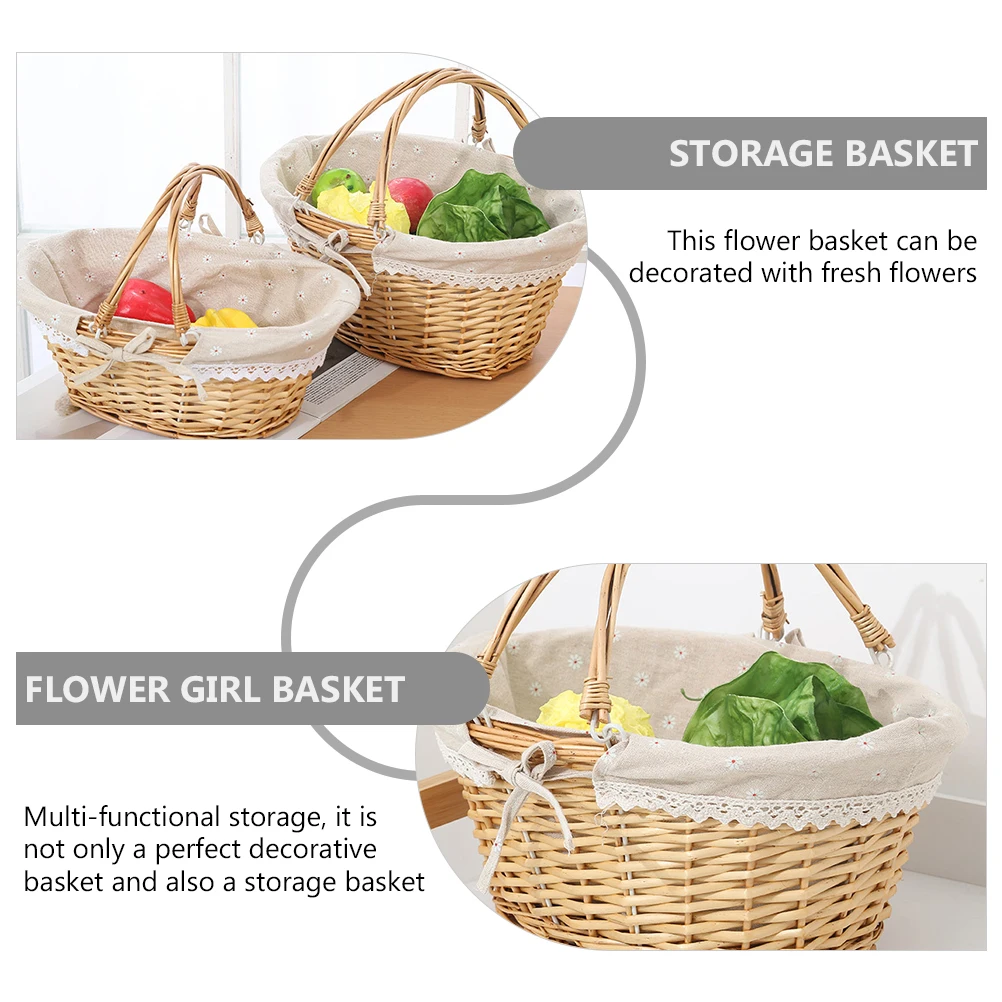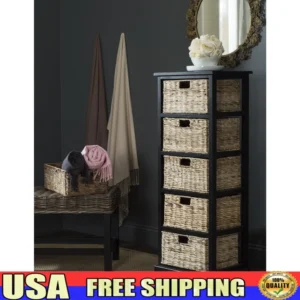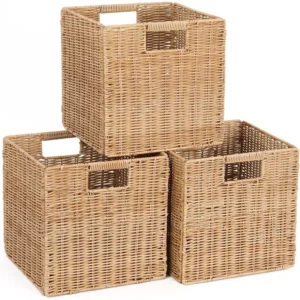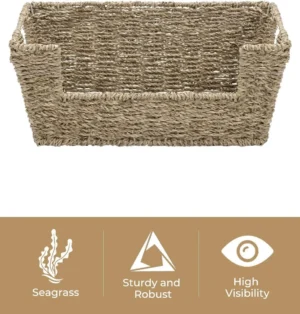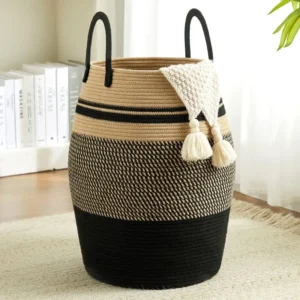Understanding Woven Baskets: The Fundamental Concept
Weaving represents one of humanity’s oldest and most enduring crafting techniques. At its core, “woven” refers to the basic process of interlacing flexible materials to create something new. This fundamental technique involves crossing one element over and under another in a pattern that creates strength, structure, and often beauty.
The versatility of weaving extends far beyond just baskets. This ancient technique has been applied to create:
- Textiles and fabrics for clothing
- Mats and rugs for floor coverings
- Furniture pieces like chairs and tables
- Architectural elements such as screens and panels
- Storage containers of all shapes and sizes
What makes weaving particularly remarkable is the vast range of materials that can be used. Virtually any flexible material can become part of a woven creation:
- Natural plant fibers (grasses, reeds, palm leaves)
- Animal-based materials (wool, leather strips)
- Paper and cardboard
- Synthetic materials (plastic strips, vinyl)
- Recycled materials (newspaper, fabric scraps)
Understanding different weaving techniques helps appreciate the diversity within this craft. When we talk about “woven baskets,” we’re referring to an incredibly broad category encompassing numerous distinct techniques, traditions, and styles.
It’s helpful to think of “woven” as the overarching umbrella term that includes many specialized weaving methods. These varied approaches have developed across cultures and throughout history, resulting in a rich tapestry of distinct traditions, each with its own unique characteristics and applications.
Our woven storage baskets collection demonstrates this diversity, showcasing how different materials and techniques create distinctive functional pieces. Each woven item tells a story through its construction method and material choice, whether traditional or contemporary.
What Is Wicker? Defining the Special Weaving Technique
While all wicker items are woven, not all woven items are wicker. This distinction is crucial to understanding these often confused terms.
Wicker defined: Wicker specifically refers to a weaving technique where pliable materials are woven around a sturdier framework or foundation. This method creates a characteristic rigid structure with a distinct appearance and excellent durability. The term “wicker” encompasses both the technique itself and the finished products created using this method.

The wicker technique typically involves:
- Creating a structural framework of stronger, less flexible materials
- Weaving more flexible materials around this framework
- Producing a sturdy, semi-rigid final product with visible weaving patterns
Historically, wicker has been prized for its unique combination of lightweight construction and impressive strength. This balance made it perfect for everything from storage containers to furniture. The distinctive appearance of wicker—with its visible weaving patterns and textured surface—has made it instantly recognizable across many cultures.
One of the most enduring misconceptions about wicker is that it refers to a specific material. In reality, wicker is defined by its construction technique rather than what it’s made from. Traditional wicker often uses natural materials like rattan, reed, or willow, but modern wicker pieces might incorporate synthetic materials while still employing the same fundamental weaving method.
The differences between wicker and woven baskets become clearer when examining their construction closely. Wicker’s distinct framework and weaving pattern create a more structured appearance compared to many other basket-making techniques. This specific construction method gives wicker its recognizable look and feel that has remained popular for generations.
Wicker vs. Woven: The Critical Differences Explained
Understanding the relationship between wicker and woven items requires recognizing their hierarchical connection. Simply put: all wicker is woven, but not all woven items are wicker. Let’s examine the key differences that distinguish these terms:
| Aspect | Wicker | Woven (Non-Wicker) |
|---|---|---|
| Definition | Specific weaving technique using pliable materials around a sturdy frame | General term for any item created by interlacing materials |
| Construction | Requires a framework or structural support | May or may not have a framework |
| Common Materials | Traditionally rattan, reed, willow; modern versions include synthetic fibers | Virtually unlimited: grasses, fabric, paper, plastic, metal, etc. |
| Typical Appearance | Rigid structure with visible weaving pattern | Varies widely from tight, uniform weaves to loose, artistic designs |
| Flexibility | Generally semi-rigid to rigid | Ranges from very flexible to rigid |
| Common Uses | Furniture, structured baskets, decorative items | Clothing, baskets, mats, art pieces, containers |
The confusion between these terms stems from their overlapping nature and the way they’re often used interchangeably in casual conversation. When browsing through various woven and wicker styles, you’ll notice that while wicker has a distinctive look, other woven techniques produce dramatically different appearances.
What makes wicker special among weaving techniques is its methodical approach of weaving around a structural framework. This technique creates strength and stability that allow wicker items to maintain their shape even under significant weight or pressure. Other woven techniques might achieve stability through tightness of weave, material stiffness, or other methods that don’t necessarily involve a distinct framework.
In retail settings, products may sometimes be mislabeled, with “wicker” being used as a catchall term for various woven items. Understanding the true distinction helps consumers make more informed choices about the products they’re purchasing and their expected properties.
Materials Commonly Used in Wicker Weaving
The material choice in wicker production significantly influences the appearance, durability, weight, and price of the finished product. Traditional wicker typically utilizes natural plant fibers, while modern alternatives incorporate synthetic materials for different properties and applications.
Natural Wicker Materials
Rattan: Perhaps the most classic wicker material, rattan is a climbing palm that produces long, flexible stems. Its exceptional combination of strength and pliability makes it ideal for wicker weaving. Rattan has a distinctive light tan color and natural sheen that many find appealing. The term “cane” often refers specifically to the outer skin of rattan, which can be stripped and used for finer weaving projects.
Willow: Known for its exceptional flexibility, willow branches have been used in basket making for thousands of years. Willow wicker typically features a rustic appearance with visible natural variations in the material. It’s particularly valued for its beautiful color variations ranging from pale cream to rich amber.
Bamboo: Though technically a grass, bamboo provides excellent rigidity and strength for wicker frameworks. Its hollow structure makes it lightweight yet strong. Bamboo wicker tends to have a more pronounced, visible grain pattern and often features the distinctive nodal structure of the bamboo plant.
Reed: This term typically refers to processed rattan core (the inner portion of rattan stems). Reed is highly flexible when soaked but becomes quite rigid when dry, making it perfect for wicker. It’s typically uniform in appearance with a light, warm color.
Seagrass: This fast-growing plant creates wicker with a distinctive texture and natural greenish tint that fades to a warm beige over time. Seagrass wicker tends to be more textural than other materials.
Water Hyacinth: This plant produces an increasingly popular wicker material with excellent flexibility and a distinctive twisted appearance. Water hyacinth wicker typically has a chunky, robust texture that adds visual interest to pieces.
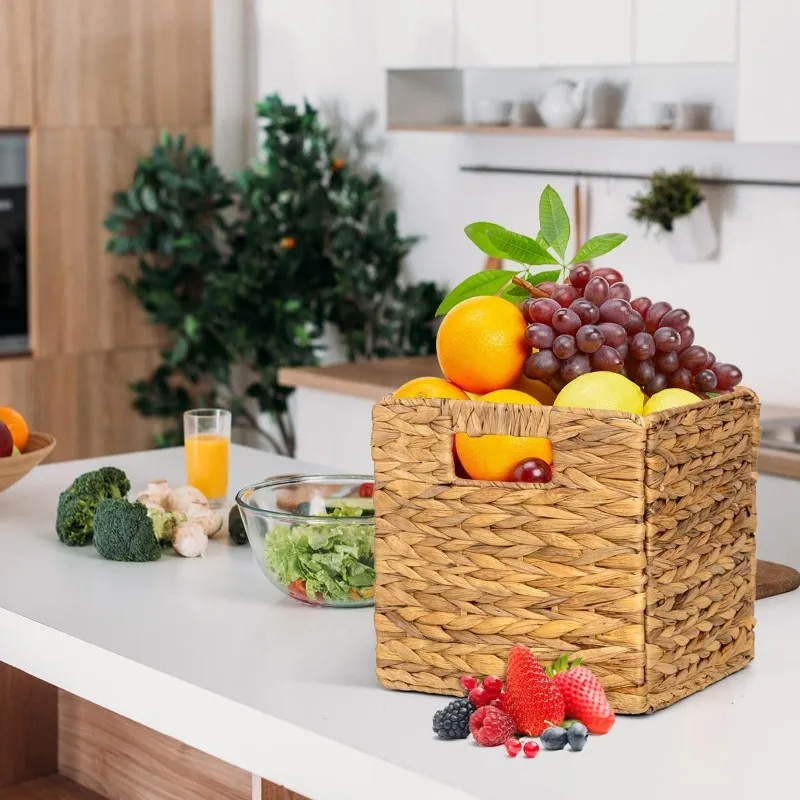
Synthetic Wicker Materials
Resin/PE Wicker: Polyethylene wicker mimics the appearance of natural materials while offering superior weather resistance. Modern versions are often UV-stabilized to prevent fading and can withstand outdoor conditions that would damage natural fibers.
Vinyl: This synthetic material creates highly durable wicker that resists moisture, insects, and fading. Vinyl wicker can be produced in virtually any color, allowing for design flexibility not possible with natural materials.
Synthetic Fibers: Various synthetic fibers create wicker with specialized properties like extreme durability or specific aesthetic qualities. These may incorporate recycled materials or proprietary blends developed for commercial applications.
Understanding the differences between natural and synthetic wicker materials helps consumers choose products that best suit their needs. Natural materials typically offer greater environmental sustainability and a classic aesthetic, while synthetic options provide enhanced durability and maintenance benefits.
Our rattan baskets showcase how this versatile natural material creates beautiful wicker items with timeless appeal. The distinctive properties of each material create unique possibilities for both function and design in wicker products.
Materials Used in Non-Wicker Woven Baskets
Beyond traditional wicker materials lies an expansive world of alternative materials used in woven basketry. These diverse options create distinctive looks and properties that serve specific functional and aesthetic purposes.
Textile and Fabric Materials
Fabric strips, yarn, and textile remnants create soft, flexible baskets ideal for storing lightweight items. These baskets often feature vibrant colors and patterns not possible with rigid materials. Recycled textiles and clothing can be repurposed into eco-friendly woven containers, combining sustainability with unique aesthetic appeal.
Paper-Based Materials
Surprisingly durable when properly treated, paper materials create lightweight yet sturdy woven items:
- Rolled newspaper tubes form sturdy woven structures when properly sealed
- Kraft paper strips create rustic, textural baskets
- Specialized paper cords designed specifically for weaving offer surprising strength
- Cardboard strips can be woven into utilitarian storage containers
Rope and Cord Options
Natural or synthetic ropes and cords produce distinctive woven baskets with excellent durability:
- Cotton rope creates soft, flexible containers with a nautical aesthetic
- Jute and sisal provide rustic strength with natural coloration
- Nylon and polyester cords offer weather resistance for outdoor applications
- Specialty climbing ropes bring vibrant colors and exceptional strength
Metal Weaving Materials
Metal wires and strips create baskets with industrial appeal and exceptional durability:
- Steel wire mesh produces rigid, utilitarian baskets perfect for workshop settings
- Copper wire creates decorative pieces that develop a patina over time
- Aluminum strips offer lightweight yet sturdy construction
- Galvanized metal provides rust resistance for outdoor and wet environments
Plastic and Recycled Materials
Modern basketry increasingly incorporates sustainable plastic options:
- Recycled plastic strips create durable, waterproof containers
- Upcycled packaging materials transform waste into functional items
- Food-grade plastic ribbons offer easy-to-clean storage for kitchen environments
- Biodegradable plastic alternatives combine convenience with environmental consciousness
Our woven laundry baskets demonstrate how these alternative materials create functional pieces that serve specific household needs. The material choice fundamentally shapes not only the basket’s appearance but also its functionality, durability, and suitability for specific uses.
Weaving Techniques Beyond Wicker
While wicker represents one well-known approach to basket making, numerous other weaving techniques create distinctly different results. Each method produces unique structural properties and visual patterns that serve different functional and aesthetic purposes.
Coiled Basketry
Coiled basketry involves wrapping flexible materials around a central core to create a spiral structure:
- The core material provides structure (often grass, rush, or fiber bundles)
- A second material wraps around this core and binds each coil to the previous one
- This technique creates exceptionally sturdy, often watertight containers
- The finished appearance features distinctive circular or spiral patterns
- Particularly suited for creating rounded forms with smooth, continuous surfaces
Plaited or Braided Basketry
This technique involves crossing elements over and under each other in various patterns:
- Elements may be arranged diagonally (diagonal plaiting) or at right angles (checkerwork)
- Creates a tight, often geometric pattern with excellent structural integrity
- Commonly uses flat materials like strips or ribbons rather than round elements
- Allows for complex pattern creation through color variation
- Often creates baskets with squared or rectangular forms
Twined Basketry
Twining involves active weft elements that twist around passive warp elements:
- Typically uses two or more flexible weft elements that twist between rigid warps
- Creates an extremely strong structure capable of holding substantial weight
- Offers excellent control over basket shape and form
- Allows for decorative variation through spacing and pattern adjustments
- Can create both open, airy structures and tight, dense weaves
Network Weaving
This technique creates open structures through knotting or looping:
- Elements connect at nodes rather than through continuous weaving
- Creates lightweight, often decorative pieces with open spaces
- Includes techniques like macramé, netting, and certain string bag constructions
- Often uses string, cord, or thin rope materials
- Combines flexibility with surprising strength
Understanding these essential basket weaving techniques helps appreciate the incredible diversity within woven items. While wicker focuses on weaving around a framework, these alternative approaches achieve structure through different mechanical principles, creating unique functional and aesthetic results.
Each technique evolved to address specific needs and utilize available materials in different environments. This diversity explains why “woven baskets” encompasses such a wide range of appearances and functional properties beyond what we typically associate with wicker.
Visual Guide: How to Identify Wicker vs. Other Woven Baskets
Distinguishing between wicker and other woven items becomes easier once you know the key visual characteristics to look for. These identifying features help determine both the construction technique and likely material composition.
Key Visual Characteristics of Wicker
Framework Structure: True wicker typically shows evidence of a structural framework with weaving material wrapped around it.
– Look for thicker, more substantial elements forming the basic structure
– Notice how smaller, more flexible materials weave around these supporting elements
– Observe the regular spacing created by the framework elements
Weaving Pattern: Wicker commonly features a characteristic over-under pattern with visible spacing between elements.
– The weaving typically follows straight lines with regular spacing
– Most traditional wicker shows a distinct, repeating pattern
– The weave usually maintains consistent spacing throughout the piece
Surface Texture and Rigidity: Wicker items maintain their shape even without contents.
– The surface typically has a pronounced texture with raised weaving elements
– When empty, wicker maintains its form rather than collapsing
– The material feels firm but may have slight flexibility
– Joints and connections between elements are usually rigid
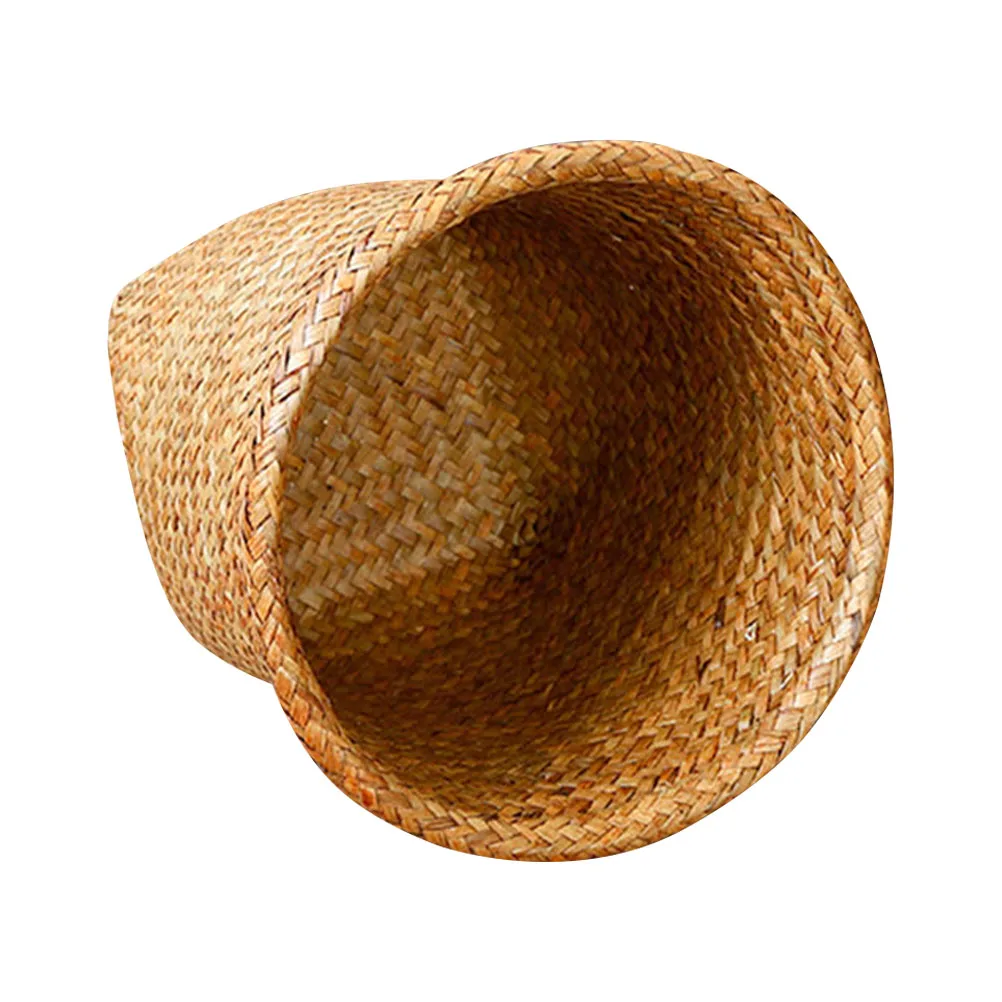
Identifying Non-Wicker Woven Items
Alternative Pattern Structures: Non-wicker woven items often feature different structural approaches.
– Coiled baskets show distinctive spiral patterns rather than grid-like weaving
– Plaited items typically have a tight, checkerboard-like appearance
– Twined baskets often show a twisted pattern where elements wrap around each other
– Network techniques create open, airy structures with visible spaces
Material Indicators: The materials themselves often provide clues to construction method.
– Flat materials like paper or fabric strips typically indicate plaiting techniques
– Very thin, flexible materials often suggest twining or netting methods
– Rigid, uniform synthetic materials are common in modern commercial wicker
Construction Visibility: How the basket is put together reveals its technique.
– Examine how the base connects to the sides
– Look at how the rim is finished
– Notice whether the pattern changes between different parts of the basket
Understanding the visual differences between laundry basket styles helps in making informed purchasing decisions. While these guidelines help identify most items, some modern pieces blend multiple techniques or use innovative materials that may challenge easy categorization.
Hybrid pieces that combine techniques are increasingly common, especially in contemporary design. These items might use a wicker framework with other weaving methods for decorative elements, or incorporate non-traditional materials within traditional techniques.
Durability and Maintenance: Wicker vs. Other Woven Styles
The longevity and care requirements of woven items vary significantly based on both construction technique and material choice. Understanding these differences helps in selecting the right basket for specific needs and maintaining it properly over time.
| Factor | Natural Wicker | Synthetic Wicker | Other Woven Styles |
|---|---|---|---|
| Weather Resistance | Limited – susceptible to moisture damage | Excellent – often UV and water resistant | Varies widely by material |
| Weight Capacity | Very good – structural frame provides strength | Excellent – engineered for durability | Variable – depends on technique and material |
| Wear Resistance | Moderate – may show wear at high-contact points | Very good – resistant to abrasion | Depends on material – fabric wears faster than hard fibers |
| Expected Lifespan | 5-10+ years with proper care | 10-20+ years | 2-15+ years depending on material and use |
| Cleaning Method | Dust with soft brush, occasional gentle wiping | Can often be washed with mild soap and water | Varies from spot-clean only to machine washable |
Maintenance Requirements for Natural Wicker
Natural wicker requires specific care to prevent damage and extend its lifespan:
– Keep away from excessive moisture to prevent warping and mildew
– Clean using a soft brush to remove dust from crevices
– Occasionally wipe with a slightly damp cloth and allow to dry completely
– Apply food-safe mineral oil once yearly to maintain flexibility in dry environments
– Keep away from direct sunlight to prevent fading and brittleness
Caring for Synthetic Wicker
Synthetic wicker offers easier maintenance while maintaining appearance:
– Clean with mild soap and water as needed
– Rinse thoroughly to remove soap residue
– For outdoor pieces, hose down occasionally to remove dust and debris
– Check for loose strands and tuck them back into place
– Store covered or indoors during extreme weather conditions
Maintenance for Other Woven Basket Types
Different basket types require specialized care approaches:
– Fabric baskets may be machine washable (check manufacturer instructions)
– Paper-based items should be kept dry and cleaned with a soft brush only
– Rope baskets often benefit from occasional reshaping when empty
– Wire baskets may need periodic checking for sharp edges or rust
Environmental factors significantly impact basket longevity. High humidity environments accelerate deterioration of natural materials, while extremely dry conditions may cause natural fibers to become brittle. Following proper basket care and maintenance routines helps maximize the lifespan of any woven item.
Our wicker laundry baskets with lids combine practical durability with protective features that help extend their useful life. With proper care, quality woven items can remain functional and beautiful for many years.
Choosing Between Wicker and Other Woven Baskets
Selecting the right basket type involves matching its characteristics to your specific needs. Consider these factors when deciding between wicker and other woven styles:
Intended Use
- Storage of Heavy Items: Wicker’s structural framework makes it ideal for heavier contents like books, tools, or bulky linens.
- Flexible Storage Needs: Soft woven baskets work well for clothing, toys, or items that benefit from a gentle container.
- Decorative Display: Consider how the basket’s appearance complements the items it will hold and the surrounding décor.
- Portability Requirements: Determine whether you’ll need to move the basket frequently or if it will remain stationary.
Environmental Considerations
- Bathroom Settings: Choose synthetic wicker or water-resistant materials for high-humidity environments.
- Outdoor Use: Select weather-resistant synthetic wicker specifically designed for exterior placement.
- Kitchen Applications: Consider ease of cleaning and food safety for baskets storing edible items.
- Children’s Rooms: Prioritize baskets without sharp edges or small pieces that could break off.

Design Preferences
- Natural Aesthetic: Traditional wicker and natural fiber baskets bring organic warmth and texture.
- Contemporary Look: Modern synthetic wicker offers clean lines and consistent appearance.
- Rustic Style: Consider irregularly woven baskets with visible natural variations.
- Color Requirements: Synthetic materials offer more color options, while natural fibers provide subtler, organic tones.
Practical Considerations
- Cleaning Needs: Consider how easily the basket can be cleaned based on its intended location and use.
- Durability Requirements: Match the basket’s strength to the expected wear and tear in its environment.
- Budget Constraints: Generally, handcrafted natural fiber baskets command higher prices than machine-made synthetic alternatives.
- Sustainability Preferences: Natural materials often have lower environmental impact during production but may be less durable long-term.
Our complete wicker laundry basket guide offers specific recommendations for this common application. Understanding the benefits of different basket types helps make informed decisions based on both practical needs and aesthetic preferences.
When evaluating quality, look for:
– Even, consistent weaving without gaps or irregularities
– Smooth finishes without rough edges or protruding fibers
– Sturdy construction that doesn’t flex excessively when lifted
– Properly finished edges and rims that won’t unravel
– Appropriate weight for the material (unusually light pieces often indicate poor quality)
Black Wicker Baskets, Rattan Storage Baskets, Tall Wicker Baskets, Wicker Shelf Baskets, Woven Storage Baskets
5-Tier Distressed Black Wood Frame Storage Tower with Removable Wicker Baskets for Home Organization$715.80 Select options This product has multiple variants. The options may be chosen on the product pageWicker Laundry Baskets, Woven Laundry Baskets, Woven Storage Baskets
$392.02 Select options This product has multiple variants. The options may be chosen on the product pageRattan Shelf Baskets, Rattan Storage Baskets, Small Wicker Baskets, Square Wicker Baskets
Square Plastic Wicker Storage Baskets Set of 3 with Collapsible Design for Cube Storage Organization$185.47 Select options This product has multiple variants. The options may be chosen on the product pageWicker Baskets with Handles, Wicker Storage Baskets, Woven Storage Baskets
$137.92 Select options This product has multiple variants. The options may be chosen on the product pageLarge Wicker Laundry Baskets, Tall Wicker Baskets, Woven Laundry Hampers, Woven Storage Baskets
$130.54 Select options This product has multiple variants. The options may be chosen on the product pageWoven Laundry Baskets, Woven Laundry Washing Baskets
Price range: $136.76 through $581.37 Select options This product has multiple variants. The options may be chosen on the product page
The Versatility of Wicker in Modern Home Design
Wicker has experienced a remarkable renaissance in contemporary interior design, moving beyond traditional applications to become a versatile element in diverse design styles. Its textural interest and natural warmth make it an excellent counterpoint to many modern materials.
In today’s homes, wicker adds visual texture that complements both natural and manufactured elements. The intricate patterns and organic feel of wicker pieces create appealing contrast against sleek surfaces like glass, metal, and polished wood. This juxtaposition helps prevent rooms from feeling cold or sterile, instead adding approachable warmth.
When incorporating wicker into your home, consider these design principles:
- Use wicker to add textural variety in minimalist spaces
- Pair wicker with upholstered pieces for balanced visual weight
- Consider both natural and painted wicker for different design effects
- Use wicker as an accent rather than the dominant material in contemporary spaces
Several design styles particularly embrace wicker elements:
Coastal and Beach-Inspired Décor: Wicker’s association with casual outdoor living makes it perfect for creating relaxed, beachy atmospheres. Light-colored wicker paired with blues and whites evokes seaside environments.
Bohemian and Eclectic Styles: The textural qualities and artisanal heritage of wicker complement the layered, collected feel of bohemian design. Mixed with global textiles and plants, wicker adds authentic character.
Modern Farmhouse Aesthetics: Contemporary farmhouse style balances rustic and refined elements, with wicker providing textural interest that feels both traditional and fresh when paired with modern components.
Minimalist and Scandinavian Influences: Light-colored wicker adds essential warmth and texture to the clean lines of minimalist design, preventing these spaces from feeling austere.
Matching baskets to home decor creates cohesive, functional spaces where storage elements enhance rather than detract from the overall design. Wicker’s versatility allows it to adapt to numerous interior styles while maintaining its distinctive character.
Is Rattan the Same as Wicker?
No, rattan and wicker are not the same thing—they represent a material and a technique, respectively. This common confusion stems from how frequently these terms appear together in product descriptions and casual conversation.
Rattan is a specific material—a type of climbing palm native to tropical regions. It produces long, flexible stems that, when harvested and processed, create excellent weaving material with natural strength and pliability. Rattan can be used as both the structural framework and the weaving material in many basket and furniture designs.
Wicker, by contrast, refers to the weaving technique itself—specifically, the method of weaving pliable materials around a sturdier frame. While rattan is often used in wicker construction, many other materials can also be employed in this technique, including reed, willow, bamboo, and various synthetic materials.
When you see terms like “rattan wicker,” this describes wicker items (the technique) made using rattan (the material). Our rattan storage baskets demonstrate how this particular material creates wicker items with distinctive properties—notably the excellent strength-to-weight ratio and natural aesthetic that make rattan so desirable for wicker applications.
Understanding this distinction helps clarify product descriptions and ensures you know exactly what you’re getting when purchasing woven items.
Are All Woven Baskets Considered Wicker?
No, not all woven baskets are wicker. While wicker represents a significant category within woven items, it’s specifically defined by its technique of weaving around a framework structure. Many other basketry methods exist that create woven products through different approaches.
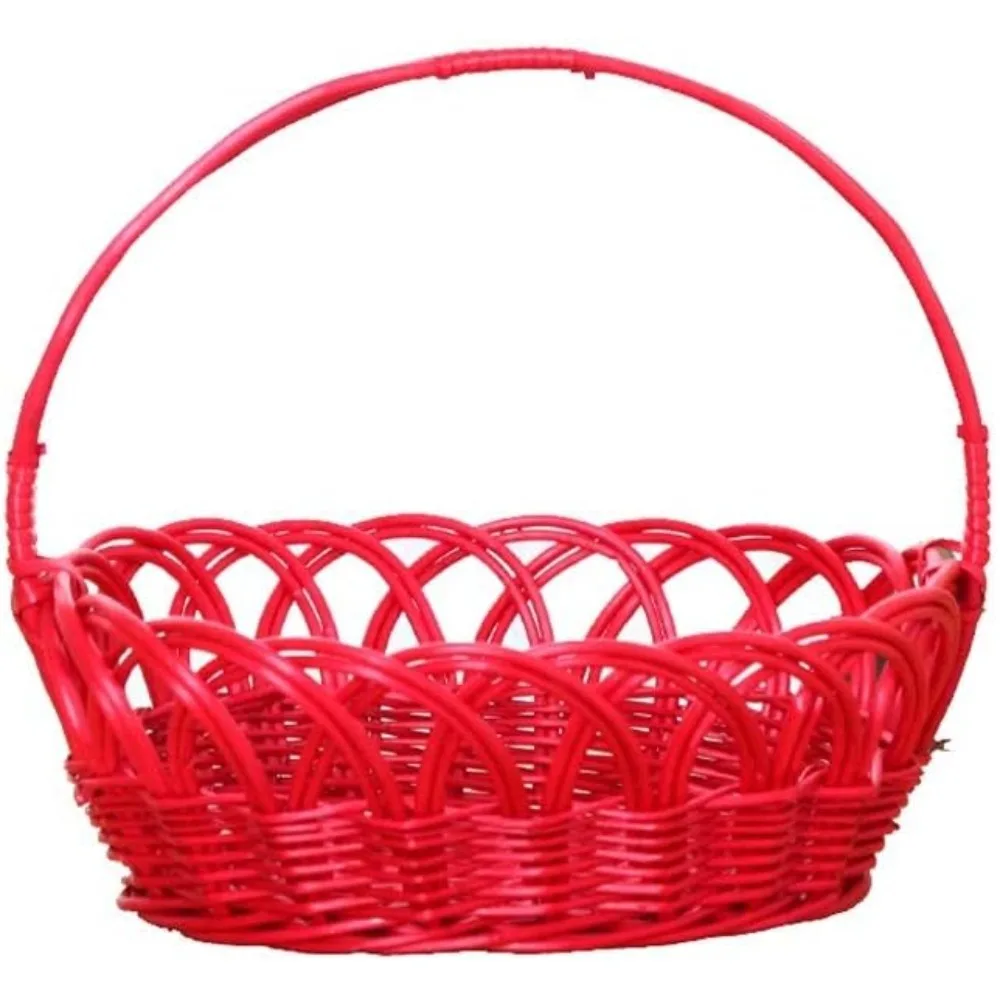
Non-wicker woven baskets include:
- Coiled baskets built by spiraling materials around a central core
- Plaited baskets created by interlacing elements in various patterns without a separate framework
- Twined baskets where active elements wrap and twist around passive structural elements
- Knotted or looped baskets formed through network techniques rather than continuous weaving
Each technique creates baskets with distinctive properties and appearances. For example, coiled baskets often achieve watertight construction impossible with typical wicker techniques. Meanwhile, plaited baskets may create tighter, more uniform patterns than traditional wicker.
When exploring different laundry basket styles, you’ll encounter this variety in construction approaches. Understanding that “woven” encompasses many techniques beyond wicker helps appreciate the diversity of basketry traditions and the specialized functions each approach serves.
Can Synthetic Materials Be Used for Authentic Wicker?
Yes, synthetic materials can absolutely be used to create authentic wicker items. While traditional wicker historically used natural plant materials, the defining characteristic of wicker is the weaving technique—not the material itself.
Modern synthetic wicker maintains the traditional weaving method while substituting contemporary materials that offer practical advantages:
- Enhanced weather resistance for outdoor applications
- Greater durability in high-use environments
- Consistent coloration and appearance
- Resistance to insects, mold, and mildew
- Easier maintenance and cleaning
These synthetic materials—typically polyethylene, vinyl, or proprietary resin blends—are specifically engineered to mimic the look and feel of natural fibers while addressing their limitations. High-quality synthetic wicker can be nearly indistinguishable from natural versions while offering significantly extended lifespan.
Our wicker storage baskets include both natural and synthetic options suited to different environments and needs. For indoor decorative pieces, natural materials often provide superior aesthetic qualities. For functional items in challenging environments like bathrooms or outdoor settings, synthetic wicker offers practical advantages while maintaining the distinctive wicker appearance.
The choice between natural and synthetic ultimately depends on the specific application, environmental conditions, and personal preference regarding sustainability and authenticity.
What’s the Difference Between Woven Baskets and Braided Ones?
Woven and braided baskets represent different construction approaches, though they sometimes appear similar to untrained eyes. The key differences lie in how the materials interact and create structure.
Weaving typically involves two sets of elements (called warp and weft) that interlace at right angles or diagonal angles to each other. The warp elements often provide structure while the weft elements weave through them, creating a grid-like pattern. This technique builds fabric-like surfaces that can be shaped into three-dimensional forms.
Braiding, by contrast, involves intertwining three or more elements together in a pattern where each element passes alternately over and under the others. In basketry, braiding techniques like plaiting or twining create distinctive patterns:
- Plaited braids produce flat, ribbon-like structures that can be arranged to form basket walls
- Coil-based braiding wraps materials around a core in a spiral pattern
- Edge braiding creates finished rims and handles using specialized techniques
Some baskets incorporate both techniques—perhaps using weaving for the main body and braiding for decorative elements or reinforcement. The ultimate guide to stylish wicker and woven baskets explores how these different techniques create distinctive aesthetic and functional properties.
Visual identification tips:
– Braided elements typically show diagonal patterns where materials cross
– Woven elements often create grid-like or perpendicular patterns
– Braided sections frequently appear thicker or more substantial than woven areas
– Handles and rims often showcase braiding techniques even when the main basket is woven
Is Wicker Furniture More Durable Than Other Woven Furniture?
The durability of wicker furniture compared to other woven furniture depends on several key factors rather than being universally superior or inferior. Understanding these factors helps set realistic expectations about longevity and performance.
Material Impact on Durability:
– Natural wicker materials vary significantly in strength—rattan provides excellent durability while lighter materials like paper or grass wear more quickly
– Synthetic wicker typically outlasts natural materials in challenging environments
– Treatment processes (lacquers, oils, paints) significantly affect natural material longevity
Construction Quality:
– Tight, consistent weaving patterns enhance structural integrity
– Properly secured ends prevent unraveling and failure points
– Reinforced stress areas (where legs meet seats, for example) improve longevity
– Framework quality often matters more than the weaving material itself
Usage Environment:
– Indoor wicker lasts significantly longer than identical pieces used outdoors
– Humidity fluctuations cause natural materials to expand and contract, potentially weakening connections
– Direct sunlight degrades both natural and synthetic materials over time
– Temperature extremes affect different materials in various ways
Maintenance Practices:
– Regular cleaning prevents dirt buildup that can abrade fibers
– Prompt attention to loose strands prevents cascading damage
– Appropriate seasonal storage dramatically extends furniture lifespan
– Occasional reapplication of protective finishes maintains natural material flexibility
Our wicker picnic baskets demonstrate how specialized construction enhances durability for specific applications. With proper care and appropriate material selection for the intended use, quality wicker items can offer exceptional durability—often outlasting many other furniture types when well-matched to their environment.
Modern Innovations in Wicker and Woven Design
The world of wicker and woven products has experienced remarkable innovation in recent years, blending traditional craftsmanship with contemporary materials and manufacturing approaches. These advancements have expanded design possibilities while enhancing practicality and sustainability.
Material innovation has dramatically transformed the wicker landscape. Advanced synthetic fibers now mimic natural materials with remarkable accuracy—capturing the visual texture and warmth of traditional wicker while offering enhanced performance characteristics. These materials include:
- UV-stabilized polyethylene that resists fading even in direct sunlight
- Recycled plastic formulations that combine sustainability with durability
- Hybrid materials incorporating both natural and synthetic components
- Biodegradable alternatives to traditional plastics
Manufacturing technology has similarly evolved, allowing for greater precision and consistency in woven products. Computer-controlled weaving processes create uniform patterns that maintain traditional appearances while ensuring structural integrity. These technological advances enable:
- More complex weaving patterns previously difficult to achieve by hand
- Consistent quality across production runs
- Integration of multiple materials in single pieces
- More efficient material usage with less waste
Sustainability has become a central focus in modern wicker production. Innovations include:
- Sustainable harvesting practices for natural materials
- Incorporation of rapidly renewable resources
- Recycled content in both natural and synthetic wicker products
- Design approaches that facilitate repair and extend product lifespan
The aesthetic evolution of wicker reflects changing design sensibilities while honoring traditional forms. Contemporary wicker often features:
- Clean, minimalist interpretations of classic patterns
- Novel color applications beyond traditional natural tones
- Scale variations that emphasize either delicacy or bold statement pieces
- Integration with other materials like metal, glass, and engineered wood
Our laundry room wicker baskets showcase how modern wicker designs combine timeless appeal with practical innovation. These pieces demonstrate how contemporary approaches honor traditional wicker heritage while addressing current lifestyle needs and design preferences.
Finding Quality in Both Wicker and Other Woven Baskets
Regardless of the specific weaving technique or material, certain universal quality indicators help identify well-crafted woven items worth investing in. These quality markers apply across both wicker and non-wicker woven products.
Quality Indicators for Wicker Items
- Weaving Consistency: Look for even, regular patterns without gaps or irregularities
- Framework Integrity: Ensure structural elements feel solid with no wobbling or instability
- Junction Points: Check where different parts connect—these should be tight and secure
- Surface Finish: The surface should be smooth without sharp edges or protruding fibers
- Material Quality: Examine for consistent coloration and texture throughout the piece
- Weight Distribution: The item should feel balanced when lifted, not top-heavy or lopsided
- Base Stability: When set down, the piece should sit flat without rocking or unevenness
Quality Signs in Other Woven Baskets
- Weave Tightness: The weaving should be consistent with uniform tension
- Edge Finishing: Edges and rims should be neatly finished without fraying or loose ends
- Material Consistency: Materials should be uniform in width and quality throughout
- Structural Integrity: The basket should maintain its shape even when empty
- Base Construction: The bottom should be reinforced appropriately for intended use
- Color Consistency: Dyed materials should show even coloration without blotchiness
- Handle Attachment: Handles should be securely integrated, not merely added as afterthoughts
When testing quality before purchase:
- Gently press the sides to assess flexibility and recovery
- Lift the item when empty to evaluate weight and balance
- Examine inside corners and joints for construction quality
- Check the base for level placement and stability
- Inspect handles by applying gentle pressure similar to normal use
Our wicker baskets with handles demonstrate these quality principles through careful construction and material selection. Understanding these quality indicators helps distinguish between items that merely look similar and those that will provide lasting functionality and beauty.
The highest quality woven items, whether wicker or other techniques, combine excellent materials with skilled craftsmanship—creating pieces that serve both practical needs and aesthetic desires for years to come.

